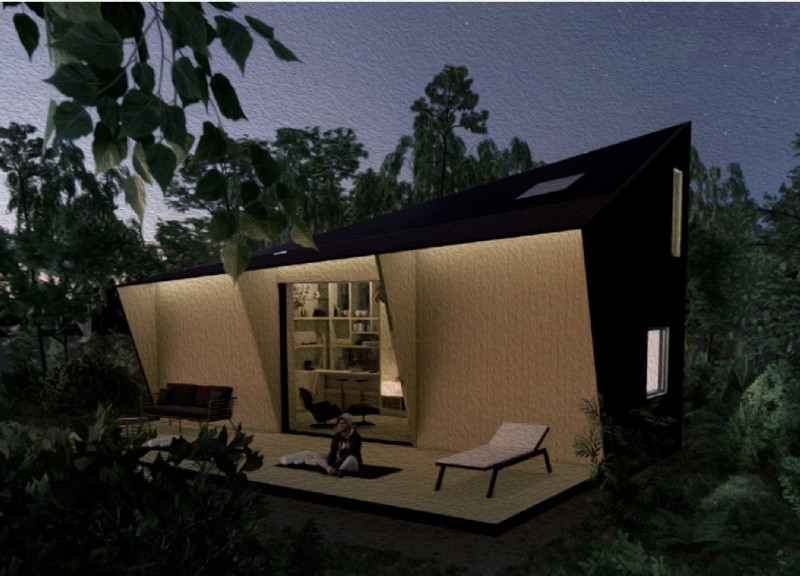5 key facts about this project
CABIN:ET provides a response to the rising housing challenges in Dublin, where high rental costs make affordable living difficult for many. Designed specifically for digital workers, the micro-home aims to offer a practical alternative that prioritizes both comfort and connectivity with nature. The thoughtful design balances functionality and aesthetics, fitting into the urban landscape while also promoting a sustainable lifestyle.
Design Concept and Layout
The layout of CABIN:ET emphasizes efficient use of space. It features an open plan that connects living and work areas, catering to the evolving needs of those who work remotely. The design creates an inviting atmosphere, with easily navigable spaces that facilitate both focus and relaxation. Natural light floods the interior, enhancing the sense of openness.
Materiality and Construction
CABIN:ET is built using an upcycled approach, taking advantage of materials such as waste timber, windows, and plastic. Non-toxic materials play a significant role in construction, including Oriented Strand Board (OSB), plywood, and cork. These materials are chosen not just for their performance but also for their minimal impact on the environment. This choice reflects a broader commitment to sustainability within the design.
Sustainable Features and Ecosystem Integration
Operating independently from traditional infrastructure, CABIN:ET incorporates features that promote sustainable living. Rainwater harvesting systems, a biomass stove for heating, photovoltaic panels for energy, and a compost toilet for waste management are included to support an off-grid lifestyle. The micro-home is also paired with a Miyawaki Micro-forest, utilizing native plants to enrich local biodiversity. This combination enhances the environment while providing a space for flora and fauna to thrive.
Community Engagement and Land Regeneration
The integration of CABIN:ET into agricultural areas is made possible through partnerships with local farmers. By leasing unused farmland, the project enables land regeneration and contributes to biodiversity efforts. Economic incentives are provided to farmers involved, creating a mutually beneficial relationship. This strategy illustrates how living spaces can exist in harmony with agricultural practices, addressing the need for affordable housing while supporting local communities.
Large windows in CABIN:ET create a connection between the interior and the surrounding landscape. This design detail allows for a consistent flow of natural light and views, which helps to enhance the overall living experience for residents.



















































